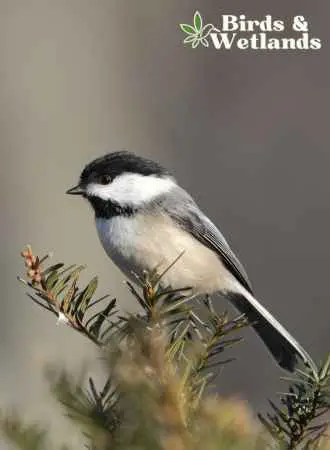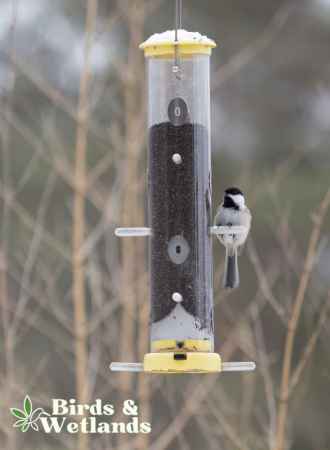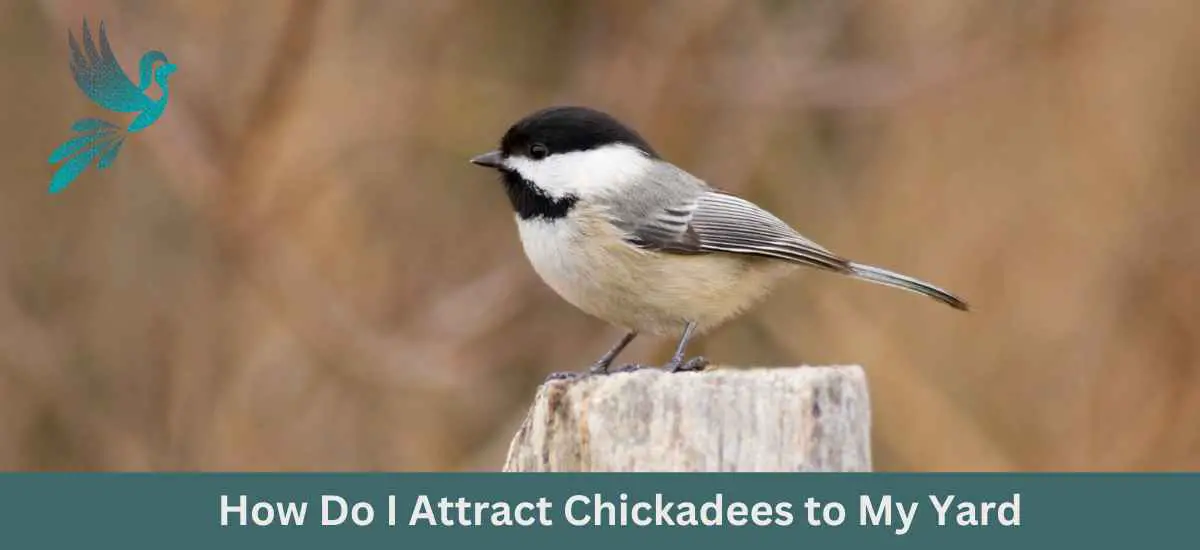Chickadees are a favorite among birders for a good reason! These small birds are attractive, playful, and simple to attract to your yard. If you want to enjoy chickadees in your backyard, keep reading for tips on making your yard more appealing to these feathered friends.
Key Takeaway on Ways to Attract Chickadees
North America has seven different species of chickadees. Chickadees living in the suburbs differ more from those living in rural areas. Each species is unique from others, possessing characteristics distinct from its own species.
You can easily attract chickadees to your backyard by providing these little birds with their preferred food sources, water, a safe nesting site and many more.
Chickadees tend to spread out into more habitats in winter, so even if there appear to be none near your home, some may wander by.
How Many Species of Chickadees Are There in North America?

Chickadees are one of the most common songbirds in North America, with at least seven different species found throughout the continent. Each chickadee species has distinct characteristics and behaviors, making them all fascinating birds in someone’s backyard.
For example, chickadees that live in suburban areas are more comfortable around humans, possibly due to higher levels of human activity. In contrast, those that live in rural areas tend to be much more shy and elusive.
Furthermore, some chickadees have distinctly different food preferences or vocalizations than others, which helps natural selection and ensures each species remains well-adapted to its specific habitat.
Here are the seven species of Chickadees in North America:
Black-capped Chickadee
Mountain Chickadees
Chestnut-backed Chickadees
Mexican Chickadees
Gray-headed Chickadee
Carolina Chickadees
Boreal Chickadees
How to Identify a Chickadee
North American chickadees are widespread across the continent and are one of the most easily identified bird species. These animals are a real treat in the wild, with their medium-sized bodies and distinct appearance. They have a relatively short body length of about 6 inches and a wingspan of about 9 inches. Their plumage is mostly dark gray, with black streaks running through it, a black cap or head, and white cheeks.
North American chickadees have long, tapered wings that allow them to move quickly through the air as they forage for food. These wings also have distinct white tips that contrast with the rest of the plumage, making them easy to identify even from a distance. These birds’ tails are also relatively long and rectangular, and their bills are thin but sturdy with slightly hooked tips.
What Are the Best Months to Spot Chickadees?

Chickadees are generally easy to spot during the spring and early summer months. However, different species of chickadees have slightly different migratory patterns and a wide geographical range.
For example, black-capped chickadees are among the first birds in North America to return from their winter migration in February or March. They also appear to thrive during the October autumn migration season.
Other bird species, such as the Carolina Chickadee and Mountain Chickadee, migrate later, most arriving between April and July.
During most months of the year, these tiny songbirds are regular visitors to backyards across North America. Their friendly appearance and charming call make them the favorites of many bird watchers in the country.
How Do You Attract Black-Capped Chickadees and Others
Attracting chickadees is fairly easy to do and quite a rewarding experience. If you bring chickadees to your yard, you can also attract its related species, the tufted titmouse. Here’s how you do it:
Prepare Chickadees’ Favorite Foods
Chickadees are among the most common songbirds in North America. Their attractive appearance, bold personalities and lively nature add excitement and energy to anyone’s yard and garden. So, it’s no wonder many people want to attract these cute birds to their homes.
One of the most effective ways to encourage chickadees to visit and stay at one’s backyard or garden is by offering them their favorite foods. These small songbirds eat a wide variety of foods, from black oil sunflower seeds to peanuts to mealworms and suet.
Chickadees enjoy eating nyjer seeds, tiny black thistle seeds from various plants. They also enjoy safflower and hulled sunflower seeds, which are generally easier for people to provide since they do not come coated in pesticides or other chemicals.
As for mealworms, you can buy them either live or dried. Chickadees prefer live mealworms and may even reject dried ones. However, it is easier to keep dried mealworms than live ones, so you may want to offer your chickadees a mix of both live and dried mealworms.
Chickadees love to eat insects. So if you want to attract these birds to your backyard, minimize the use of insecticides and plant bushes that attract insects.
Chickadees eat suet and peanuts. Suets are specialized fats that are commonly used in bird feeders. These fat sources are typically higher in calories than regular bird seeds, making them ideal for helping hungry birds to bulk up and store energy for the cold winter months. Peanuts are widely available, so you can easily buy them online.
To start attracting chickadees to your yard or garden, place these treats onto tray or platform feeders for the best results. For instance, you can place the suet and other food on the fence post or bark of your trees. If you really want to bring the Chickadees in, these foods will make it happen.
Choose the Best Bird Feeders for Chickadees

Now that you know what foods attract chickadees, it’s time to choose the perfect feeders to put these foods in.
One of the best feeders for chickadees is the caged tube feeder. These feeders protect the seeds from other birds and help to reduce waste. A caged bird feeder offers a safe bird-feeding station for chickadees and many birds because it keeps other birds out except for small birds like chickadees. It also has multiple perches and openings, allowing chickadees and other birds to access the seeds inside easily.
Other feeders include those that are adjustable to only allow smaller birds access and feeders specially made for their favorite food such as metallic nyjer seed feeders and suet feeders.
Regardless of what feeder you choose, ensure it protects chickadees from predators. Additionally, avoid ground feeding because small birds are particularly vulnerable to predation while feeding on the ground.
Bird Baths
One of the best ways to attract chickadees to your garden or backyard is to provide a fresh water source like a bird bath. Many chickadees visit bird baths to bathe and preen, which helps them keep their glossy plumage and stay hydrated during the hot summer months. Furthermore, providing a bathing area or a heated birdbath will entice chickadees to spend more time in your yard, allowing you to enjoy their company and the beauty of these delightful birds up close.
Safe Nesting Sites

Yes, you can attract chickadees to your backyard with safe nesting sites. Chickadees are cavity-nesting birds that find holes in dead trees. Some chickadees even build nests inside old woodpecker holes.
One of the best ways to provide bird houses and roosting boxes for nesting chickadees is by positioning deciduous trees with large roosting cavities in surrounding thicket-like areas of bushy evergreen shrubs, berry-producing shrubs, flowering trees and other species of native plants. To make roosting boxes even more appealing, you can fill them with wood shavings or other soft materials like pine straw, pet fur or dry leaves.
If you are really serious about attracting chickadees, installing a bird house on your property might be a good idea. A well-chosen bird house will provide additional roosting options and will draw the birds in due to its familiar shape and material. Just make sure the entrance hole is small enough to allow visiting chickadees to enter and keep larger birds such as house sparrows and swallows out.
Another idea is to plant trees. For example, you can plant or buy a pre-grown conifer tree. As cavity nesters, chickadees will be attracted to a nest box or cavity nest in a bird-friendly yard.

Jim Addison is an avid bird watcher and has been obsessed with the activity since he was a young boy.
He has traveled all over North America in search of new and interesting species to observe, and his detailed knowledge of the subject makes him a sought-after expert on the topic.


